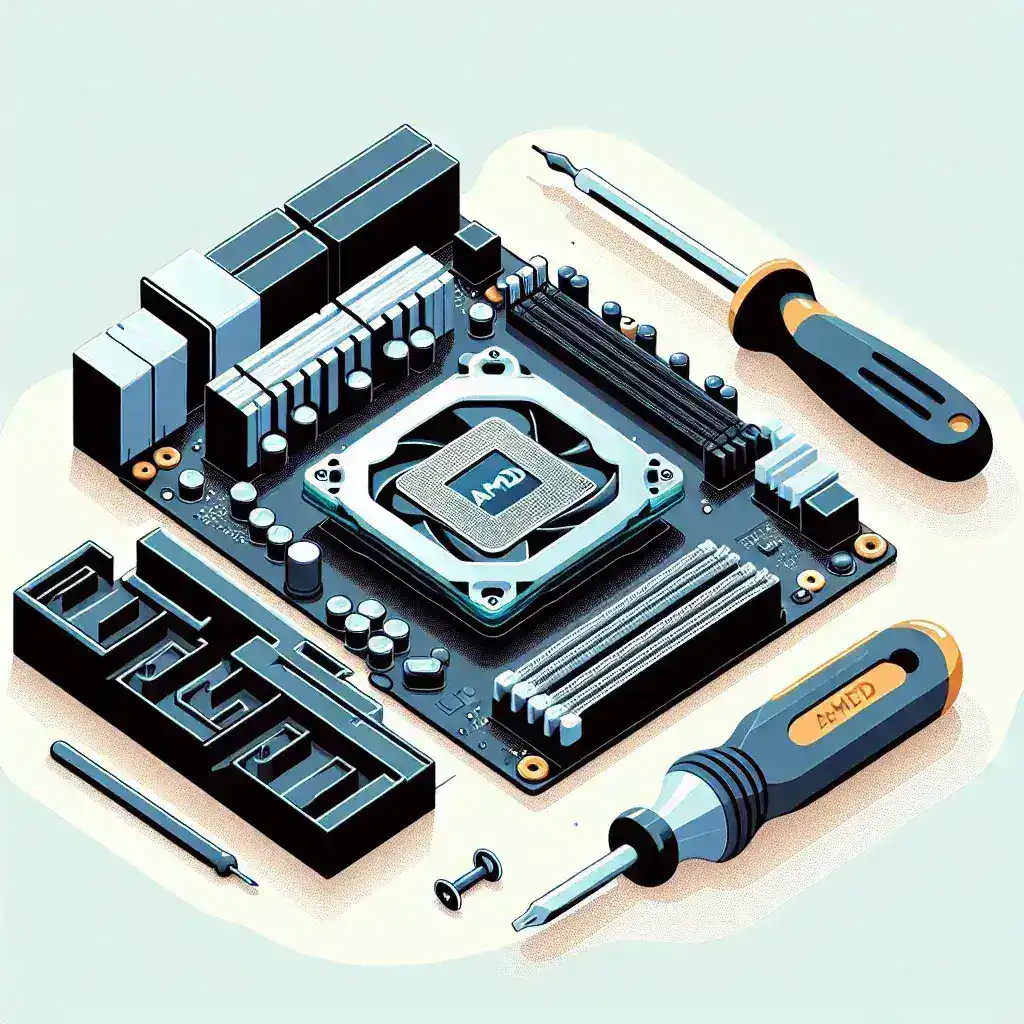Installing a CPU cooler on an AMD motherboard is a crucial step to ensure your computer runs efficiently and stays cool even under heavy workloads. Whether you are building a new system or upgrading an existing one, understanding the proper installation process is essential. This guide will take you through the steps to successfully install a CPU cooler, focusing on AMD motherboards.
Tools You’ll Need
Before starting with the installation, make sure you have the following tools and materials:
- Thermal paste (if not pre-applied)
- Philips screwdriver
- Isopropyl alcohol and a microfiber cloth (for cleaning)
- CPU cooler
Step-by-Step Installation Guide
1. Prepare Your Workspace
Ensure your workspace is clean and free of any static electricity. Work on a solid, non-conductive surface to prevent any damage to your components.
2. Install the CPU
If you haven’t already installed the CPU, start by doing so. Open the CPU socket lever, align the CPU with the socket, and gently place it in. Lower the lever to secure the CPU.
3. Apply Thermal Paste
If your cooler doesn’t have pre-applied thermal paste, apply a small pea-sized amount of thermal paste to the center of the CPU. This will help in transferring heat from the CPU to the cooler efficiently.
4. Prepare the Cooler
If your cooler consists of an additional bracket, screw it to the cooler base. Then, attach the appropriate mounting brackets for AMD motherboards.
5. Mounting the Cooler
Now, carefully place the cooler onto the CPU, ensuring it aligns with the mounting holes. Tighten the screws gradually in a crisscross pattern to ensure even pressure. Avoid overtightening, as this may damage the motherboard or the cooler mounts.
6. Connect the Fan Header
Locate the CPU fan header on the motherboard, which is usually labeled ‘CPU_FAN’. Connect the cooler’s fan cable to this header to ensure the fan receives power and can be controlled by the motherboard.
| Step | Description |
|---|---|
| 1 | Prepare Your Workspace |
| 2 | Install the CPU |
| 3 | Apply Thermal Paste |
| 4 | Prepare the Cooler |
| 5 | Mounting the Cooler |
| 6 | Connect the Fan Header |
7. Reassemble the System
Once the cooler is securely mounted, you can start reassembling your system. Ensure all the necessary connections are tight and secure.
8. Test the Cooler
Power on your system and go into the BIOS/UEFI to check the CPU temperatures. If the cooler is installed correctly, the temperatures should be within a safe operating range. You can also run a stress test to ensure the cooler is efficient under load.
Tips for Optimal Cooling Performance
- Make sure your case has good airflow. Arrange the case fans to create a push-pull configuration for efficient air circulation.
- Regularly clean the dust off your cooler and fans to maintain optimal cooling performance.
- Consider using a high-quality thermal paste for better heat conductivity.
- Ensure your cooler is compatible with your case and motherboard to avoid any physical obstructions.
Troubleshooting Common Issues
Overheating
If your CPU is overheating, check the cooler’s installation. Ensure it is making full contact with the CPU and that the thermal paste is applied correctly. Also, check if the fan is spinning and receiving power.
Noise Levels
High noise levels can be due to the fan running at high speeds. Check the fan settings in the BIOS/UEFI and adjust the fan curve to balance performance and noise.
Incompatible Brackets
If you encounter issues with incompatible brackets, refer to the cooler’s manual for the correct installation method. Some coolers come with multiple bracket options for different socket types.
Conclusion
Installing a CPU cooler on an AMD motherboard is a straightforward process if you follow the correct steps and precautions. A well-installed cooler ensures your system runs efficiently, with optimal temperatures and minimal noise. With this guide, you should now be equipped to install your CPU cooler confidently, leading to a better performing and long-lasting computer system.

